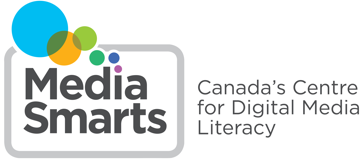Stay on the Path Lesson Four: Scavenger Hunt
In this lesson, students apply their searching and critical thinking skills to learn how to find legitimate online sources for downloading and streaming movies, music and videos.

In this lesson, students apply their searching and critical thinking skills to learn how to find legitimate online sources for downloading and streaming movies, music and videos.

The issue of copyright is one that many of us probably know a little bit about. Copying is stealing – and stealing is bad - but it can still be a grey area in a social media world which is very PRO sharing.

Teachers who include media literacy in their classrooms often face issues that don’t arise in other subjects. Nothing illustrates this better than the issue of diversity in media. It’s not unreasonable for teachers to see the topic as a can of worms and be concerned about offending students and their parents – not to mention worrying about what the students themselves might say. At the same time, it’s a topic that is simply too important to be ignored: what we see in media hugely influences how we see others, ourselves and the world. As a result, an ability to analyze media depictions of diversity is not only a key element of being media literate, it’s essential to understanding many of the social issues and concerns that we face as citizens. That’s why Media Awareness Network has developed That’s Not Me – a new online tutorial for professional development to help educators and community leaders approach this issue through key concepts of media literacy.

One of the most common ethical decisions kids face online relates to how they access and use content like music, games and videos. We can help kids make better choices by teaching them about the issue: in one study, one-quarter of young people said that they would stop accessing content illegally if it was more clear what was legal and what wasn’t.

Racial stereotypes abound on television, and children's programming is no exception. The turban-wearing bad guy, the brainy Asian, and the Black basketball whiz are just a few of the stereotypes reinforced in children's cartoons, films and TV shows. Spotting these stereotypes is often difficult for children; to them, the tomahawk-wielding Indian or the Asian karate expert is a familiar, easily-understood and often funny character. So how do you help children understand these images for what they are – oversimplified, generalizations?

Most kids live as much of their lives online as they do offline. But on the Internet there are lots of moral and ethical choices that don’t have to be made offline. These tips lay out ways you can help your children develop a moral compass to guide them through those choices.

Students are introduced to the idea of “privilege” in relation to diversity and how it applies to media. They then look at a checklist of media related privileges to help them understand the concept.

My daughter – age 14 – is all about Instagram. It’s her primary source of entertainment: if she’s on her phone, she’s likely looking at memes or laughing at silly posts made by her friends. It’s also the main way she communicates with them, as they use its messaging service much more than things like texting or video chat.
